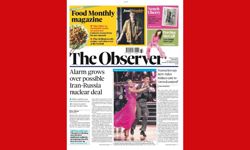According to the Newspaper Society: Local media readers are more than twice as likely to act on ads in local media (51 per cent) than ads on TV (23 per cent), magazines (19 per cent), social media platforms such as Twitter and Facebook (14 per cent) and commercial radio (14 per cent).
The Consumer Catalyst study - which looked at local media’s influence in property, cars and groceries - found that ads on local media websites prompt consumer action across all three categories, particularly when combined with ads in print.
Jane Wolfson, joint head of investment, London, Initiative, said: “These findings illustrate why it is so important for national advertisers like Tesco to appear in local media. The high levels of trust placed in local newspapers translates into real action at key stages of the path to purchase, and local newspapers are active in their communities, campaigning on issues that matter to their readers.”
Local media continues to drive high levels of action at key stages of the path to purchase with consumers using the medium to decide where to shop, find the best deals, and keep an eye on house prices. Local media ads provide reassurance and drive online searches, the research found.
Johnny Hustler, Newspaper Society communications and marketing committee chairman, said: “This research confirms the fundamental role local media plays in the media mix today as a powerful catalyst for consumer action.”
Local media (52 per cent) is nearly four times more trusted to provide relevant information about the local area than commercial TV (14 per cent) and commercial radio (11 per cent). And 88 per cent of readers are reassured that a product will be available locally if they see it advertised in local media.
More than half of respondents believe local media (53 per cent) is the best medium for standing up for people in the local area, way ahead of local BBC radio (11 per cent), local commercial radio (10 per cent) and social media (four per cent).
People continue to spend the majority of time close to home – 85 per cent spend half or more of their time within five miles of home and 70 per cent of people spend half or more of their money within five miles of home.
Local media is by far the most influential medium in the grocery category. Forty-one per cent of respondents, the highest number, decided where to shop as a result of seeing advertising in local media – ahead of supermarket promotions (25 per cent), direct mail (21 per cent) or advertising on TV (19 per cent).
An ad or an article in local media prompts readers to search for more information online. Twenty-nine per cent of all respondents in the property category looked at a property in more detail online as a result of seeing an ad or an article in local media.
Ads in local media (49 per cent) are the most popular source for keeping a general eye on the local property market, followed by property websites such as Rightmove or Zoopla (37 per cent), displays by estate agents (31 per cent), and estate agents websites (29 per cent).
Local newspaper websites boost the influence of the printed newspaper. Thirty per cent of people take action - such as looking at a property in more detail online, contacting an estate agent to enquire about a property or looking round a property - as a result of seeing property ads in local newspaper, and that rises to 38 per cent when local newspaper websites are added to the mix.
In motors, local media (41 per cent) was cited as the most useful source for seeing which types of cars were available in respondents’ price ranges, ahead of specialist car websites (39 per cent), other web sites such as Gumtree or eBay (27 per cent), and specialist car magazines (18 per cent).
The full presentation as well as findings for daily and weekly newspapers, print and online filler ads, are available for NS members to download.










